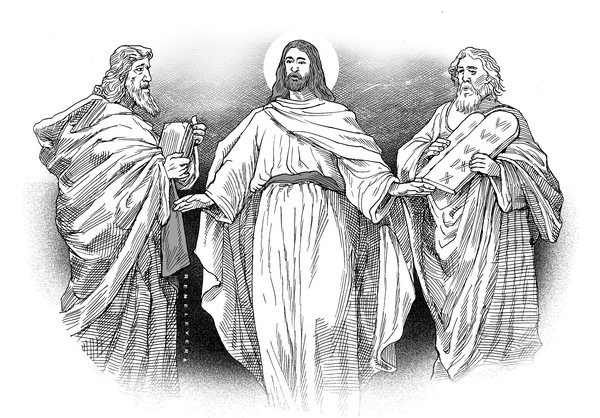The Transfiguration” ranks among the Scottish poet Edwin Muir’s better known poems.
As its title suggests, the poem relates to Christ’s Transfiguration as narrated in the Gospels.
Mark for one, writes that Jesus took Peter, James and John up a high mountain.
There his clothes became dazzling white.
Elijah and Moses came into sight and talked with Jesus, prompting Peter to say, “Rabbi, it is good that we are here! Let us make three tents: one for you, one for Moses, and one for Elijah.”
A cloud moved in and cast a shadow over them and from the cloud came a voice, “This is my beloved Son. Listen to him.” But when they looked around they saw no one else but Jesus.
Mark adds that, as they were coming down the mountain, Jesus charged them not to tell anyone about it until the Son of Man had risen from the dead.
Basically, the poem tells of the remembrance of the three apostles of the Transfiguration shortly after it happened.
They felt renewed — “our wrists / As fresh and pure as water from a well, / Our hands made new to handle holy things.” Their eyes cleansed, they saw the world return to its Edenic state — clear, unfallen.
They could not be sure if what they had was a vision of eternity, if it was itself “the unseeable / One glory of the everlasting world.” Or if the change was just in and not outside of themselves, although the outside did seem unreal, appearing to them “[a]s on the starting-day.”
When Jesus and they went back into the town, the people, creatures of sin — the lurkers under doorways, murderers, liars — came to them and somehow gained liberation — “all / Stepped out of their dungeons and were free.”
In no time, the world “rolled back into its place,” and returned to its dull, dreary status quo ante.
Then they recalled Christ’s promise to return “when time is ripe” — but not the risen Christ who still bears his wounds on his glorified body, but as “Christ the uncrucified, / Christ the discrucified, his death undone, / His agony unmade, his cross dismantled.”
The cross itself, “the tormented wood,” will be healed of its hurt “and grow into a tree / In a green springing corner of young Eden.”
And even Judas himself will “take his long journey backward / From darkness into light and be a child / Beside his mother’s knee, and the betrayal / Be quite undone and never more be done.”
Clearly, Muir detoured from the Gospel narrative, which after the Transfiguration rolls on towards the Passion and Resurrection of Christ.
Muir contemplates salvation as the turning back of the clock and a recession of time to the zero hour of Creation, to the pure, Edenic, unfallen beginning.
In the process, Christ is relieved of his cross, whose wood returns to the tree, which grows in a corner of Eden.
Christ’s Passion and Resurrection are undone, and even Judas himself returns to being a harmless child beside his mother.
This was not the case of the Transfiguration in the Gospels, which was meant to prepare and strengthen the apostles for the forthcoming crisis, the “scandal” of the passion and death of Christ.
They were given a glimpse of that beauty, which would be theirs in the kingdom of heaven, a moment of clarity when they could see the infinite, because the dreadful days lay ahead, and persecution and martyrdom awaited them as Christ’s followers and missionaries.
The Transfiguration is what we would call the consolation before the desolation, and not, as Muir’s poem suggests, the reversal of desolation.
Cardinal Basil Hume recalled a moment when he experienced what may be called a personal Transfiguration.
When he first learned that he had cancer, he immediately went to the chapel to pray.
He said that he had often preached about the seven last words of Jesus on the Cross, and now he would be part of them, a thought that, being a man of faith, he found exciting.
Cardinal Hume died two months later. Initially, during these two months, he felt joy and comfort.
But this did not last long, he said. “The curtain came down, and it was back to the darkness of faith. But I wasn’t worried,” he added, “because I knew what was beyond the curtain.”
Disclaimer: The comments uploaded on this site do not necessarily represent or reflect the views of management and owner of Cebudailynews. We reserve the right to exclude comments that we deem to be inconsistent with our editorial standards.

